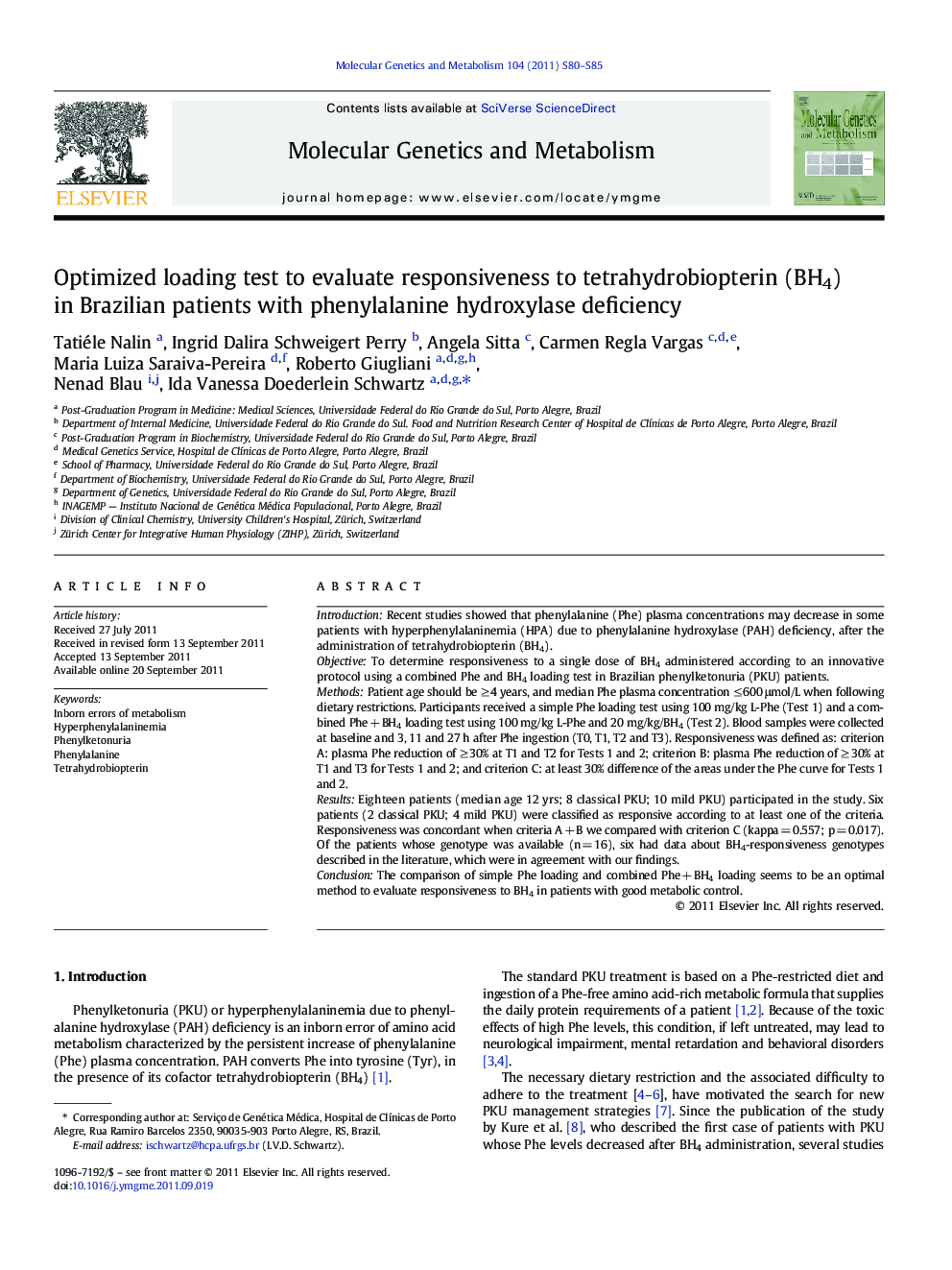| Article ID | Journal | Published Year | Pages | File Type |
|---|---|---|---|---|
| 1999069 | Molecular Genetics and Metabolism | 2011 | 6 Pages |
IntroductionRecent studies showed that phenylalanine (Phe) plasma concentrations may decrease in some patients with hyperphenylalaninemia (HPA) due to phenylalanine hydroxylase (PAH) deficiency, after the administration of tetrahydrobiopterin (BH4).ObjectiveTo determine responsiveness to a single dose of BH4 administered according to an innovative protocol using a combined Phe and BH4 loading test in Brazilian phenylketonuria (PKU) patients.MethodsPatient age should be ≥ 4 years, and median Phe plasma concentration ≤ 600 μmol/L when following dietary restrictions. Participants received a simple Phe loading test using 100 mg/kg L-Phe (Test 1) and a combined Phe + BH4 loading test using 100 mg/kg L-Phe and 20 mg/kg/BH4 (Test 2). Blood samples were collected at baseline and 3, 11 and 27 h after Phe ingestion (T0, T1, T2 and T3). Responsiveness was defined as: criterion A: plasma Phe reduction of ≥ 30% at T1 and T2 for Tests 1 and 2; criterion B: plasma Phe reduction of ≥ 30% at T1 and T3 for Tests 1 and 2; and criterion C: at least 30% difference of the areas under the Phe curve for Tests 1 and 2.ResultsEighteen patients (median age 12 yrs; 8 classical PKU; 10 mild PKU) participated in the study. Six patients (2 classical PKU; 4 mild PKU) were classified as responsive according to at least one of the criteria. Responsiveness was concordant when criteria A + B we compared with criterion C (kappa = 0.557; p = 0.017). Of the patients whose genotype was available (n = 16), six had data about BH4-responsiveness genotypes described in the literature, which were in agreement with our findings.ConclusionThe comparison of simple Phe loading and combined Phe + BH4 loading seems to be an optimal method to evaluate responsiveness to BH4 in patients with good metabolic control.
